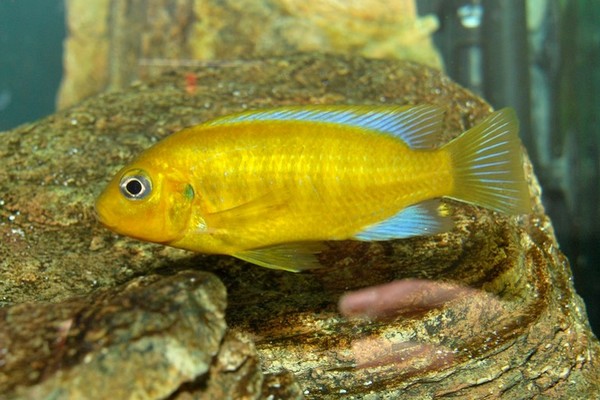
Send your inquiry of Pseudotropheus Barlowi Cichlid (Maylandia barlowi) to our email :
indonesiafishexporter@gmail.com
The Pseudotropheus Barlowi or Golden Fuscoides Maylandia barlowi (previously Pseudotropheus barlowi) is a pretty zebra-type cichlid from Lake Malawi, Africa. Though not scientifically described until 1986, it was previously sold in the hobby under the names Pseudotropheus ‘Zebra Fusco’, Pseudotropheus Fuscoides, and Pseudotropheus Fuscus. It was a popular Mbuna in years past and then demand for them waned, but they are now gaining popularity again.
This cichlid is believed to have been available since the mid to late 1970’s. When finally described, it was named after George Barlow, an American ichthyologist, and both its scientific and common name became Pseudotropheus Barlowi. More recent revisions split the Pseudotropheus genus into three sub-genera with this fish being placed in the sub-genus Pseudotropheus Maylandia. It is currently considered valid as Maylandia barlowi, but this is after much debate on the naming of this sub-genera. Consequently three names are commonly used for this fish in the hobby including Pseudotropheus barlowi, Maylandia barlowi, and Metriaclima barlowi.
This fish is a member of a group of cichlids called Mbunas. There are 13 genera full of very active and aggressive personalities of Mbuna cichlids. The name Mbuna comes from the Tonga people of Malawi and means “rockfish” or “rock-dwelling”. This name aptly describes the environment these fish live in as opposed to being open water swimmers like the Utaka cichlids and other “haps”.
Growing to only four or five inches in length, the Pseudotropheus Barlowi is a big personality in a little package. Their coloring is dependant on location, but in general the males are all a golden yellow with the anal fin being blue and having one yellow egg spot and the female is brown. They are not demanding and their bright yellow coloring is a great addition of color to the Mbuna tank. With their spunky personality they can hold their own.
These fish are not community tank specimens, but can be housed with other cichlids. They are great fish for both the intermediate and experienced cichlid keeper. Because of their smaller size they are a moderate to care for, but the males are aggressive toward the females. A male needs to be kept with three or more females to help dampen the aggression. Keeping them in a large aquarium with other Mbuna species and arranging the rocks in a manner to make “territories” will also help ease aggression.
Provide a deep sandy bed and lots of caves and rocks for them to explore and to hide in. This is especially important when the male is abusing the females. Success is dependent on the aquarists willingness to do frequent water changes, have sufficient hiding places, and provide appropriate tank mates.
Stocklist of our Cichlids Fish (Click the picture below) :
Video of Pseudotropheus Barlowi Cichlid (Maylandia barlowi)
Infographic of Pseudotropheus Barlowi Cichlid (Maylandia barlowi)

Stocklist of our Tropical Fish / Aquarium Fish / Ornamental Fish (Click the picture below) :
















